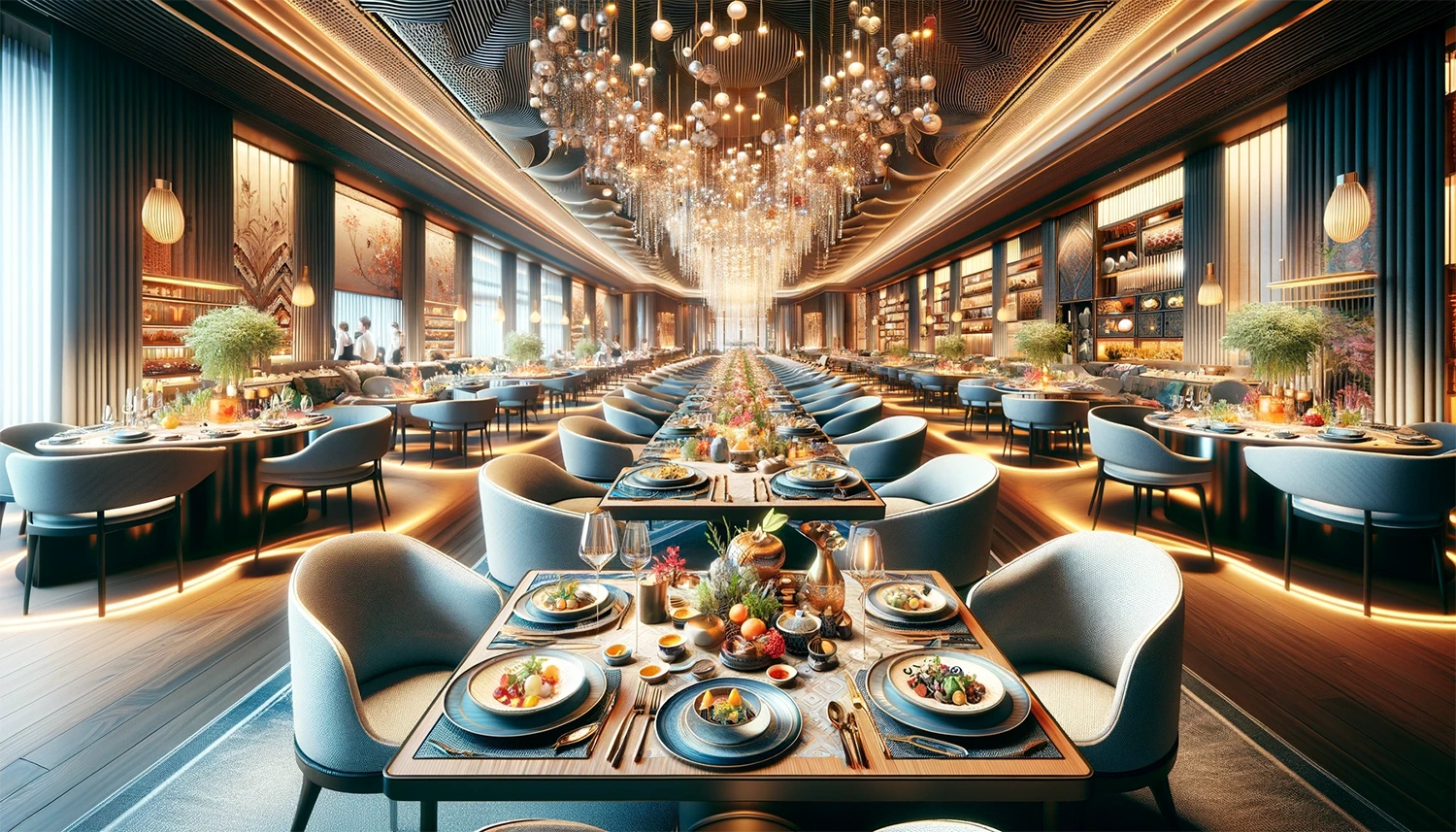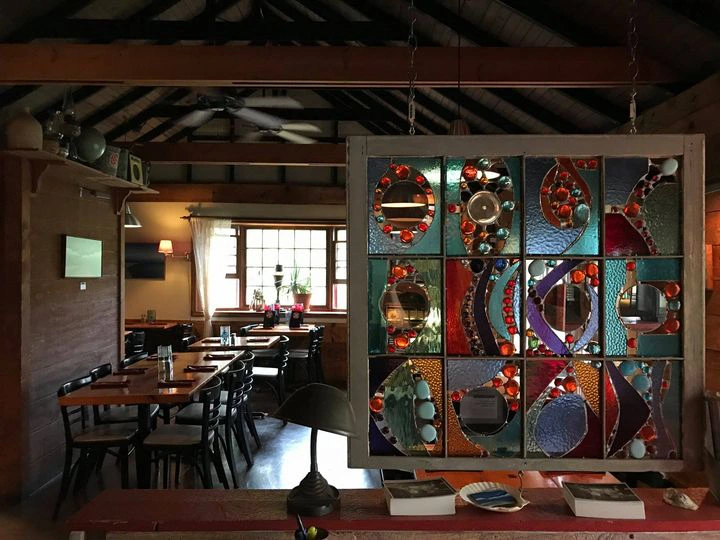Aaah. The smell of freshly baked chocolate chip cookies. Real estate agents have long understood the power of scent when showing homes to prospective buyers. The wisdom of the crowd says that baking chocolate chip cookies or placing a bowl of fresh lemons on the counter before an open house results in higher perceived home appeal and purchase intention. This wisdom exemplifies sensory marketing—using evocative aromas to set the stage for a welcoming, homey atmosphere.
Your restaurant can also use sensory marketing techniques to create immersive dining experiences that keep customers coming back. A recent study on sensory marketing in restaurants found that enhancing scent (olfactory) and touch (haptic) cues had the most substantial influence on customer satisfaction, while visual, auditory, and taste cues had less effect. The implication for you is to pay close attention to food aromas, environmental scents, textures, temperatures, and other tactile details to delight your patrons.
Examples of restaurants using sensory marketing
Restaurateurs worldwide have found innovative ways to engage customers’ senses and boost business.
- Dunkin’ Donuts partnered with a bus company in Seoul, South Korea, to release the aroma of coffee from buses whenever the Dunkin’ jingle played on the bus audio system. This activity linked the scent with the brand while reaching a captive audience. The campaign increased visits to Dunkin’ restaurants near bus stops by 16% and sales at those outlets by 29%.
- Disney has long used “Smellitzer” vents throughout its parks to pump out scents that match various rides and experiences. The sweet scent of waffles surrounds a Belgian waffle shop, while the buttery smell of popcorn is piped to queue areas to trigger hunger and guide guests toward snack carts.
- Sublimotion in Ibiza offers a $2,400, 20-course multisensory dining event coordinated by Michelin-starred chefs. The immersive experience uniquely engages all senses and includes sense touchpoints like virtual reality segments and edible paper. Accordingly, Sublimotion is the most expensive restaurant in the world.
- Ultraviolet in Shanghai has just 10 seats, with each diner’s experience individually tailored through projections, music, and scents piped from their plate. The reservation waitlist stretches months thanks to its patented, coordinated sensory experience.
Sensory marketing ideas across price ranges and revenue
Photo by Delightin Dee on Unsplash
Your restaurant doesn’t have to charge $2,000 a night or be the size of the Disney and Dunkin’ brands, though. You can use sensory marketing no matter your price range or revenue.
For example:
- If burgers are your specialty, consider pumping the smell of grilling burgers into your dining area to stimulate appetite and build anticipation for the main course.
- If you serve seafood, think about decorating with fishing nets, buoys, and other nautical gear to immerse diners in the experience of eating by the coat. You could even pipe in the scent of an ocean breeze.
- If you run a farm-to-table restaurant, consider setting your tables with burlap, wood, and galvanized metal to reinforce your rustic, agricultural theme. Adding textured placemats and menu covers will also connect to your locavore concept.
- If you manage a mid-sized restaurant or restaurant group, consider developing a signature scent that represents the essence of your restaurant. For instance, if your restaurant has a Mediterranean theme, use a blend of citrus, olive, and sea salt. Also, consider collaborating with local artisans to design bespoke tableware, whether hand-blown glasses, custom plates, or even hand-stitched napkins.
- If you operate a more prominent restaurant or restaurant group, you might offer multi-sensory dining rooms with different dining spaces focused on sensory elements. For example, one room might mimic a serene forest with subtle bird tweets while another presents the sights and sounds of the seaside.
5 ways to get started with sensory marketing in your restaurant
Photo by Jakub Kapusnak on Unsplash
Dining out is no longer about mere sustenance; many diners want immersive experiences. Sensory marketing allows you to provide those experiences by tantalizing every sense and creating an unforgettable ambiance.
Here are five ways to get started with sensory marketing in your restaurant and a reminder to train your staff to provide an excellent multi-sensory service.
1. Map sensory cues to your restaurant’s theme or cuisine
Build sensory cues around your core concept but don’t just scent with generic “food” smells. Be specific to reinforce your brand identity. For instance, a Southern barbeque joint should smell like smoked meats, an Italian trattoria like oregano and garlic, and a sushi restaurant like ginger and wasabi.
2. Layer scents.
Use both food scents from the kitchen and subtle environmental fragrances. For instance, depending on your restaurant, you might complement food smells with subtle ambient scents like floral or herbaceous notes to add complexity.
Also, vary piped-in scents by service, perhaps offering brighter citrus scents for breakfast and warmer baking spices at lunch. But watch that scents are subtle enough not to compete with food aromas. The smell of your food should always shine.
If you’re a multi-location restaurant, don’t forget to maintain scent consistency across locations to reinforce brand identity.
3. Use lighting to set the mood.
Bright, natural light from windows and skylights promotes energy and creates an airy, casual vibe for daytime meals, whereas candlelight signals romance.
String lights, lanterns, and lamps with dimmers to adjust lighting levels from lunch to dinner.
Also, play with lighting colors. Amber tones work well for a relaxed jazz bar, whereas vibrant RGB lights set the stage at a high-energy club.
4. Play the right music and sounds.
Curate playlists that match your brand and cuisine—Latin music for a taqueria, jazz in a wine bar. Consider tempo to match the vibe you want customers to feel. For instance, you might prefer an upbeat tempo during the busy lunch hour and slower acoustic sets for dinner.
Also, consider adding ambient sounds—subtle background sounds like cafe chatter or seagulls to help immerse customers in the dining experience. Ambient sounds from fireplaces and fountains also serve to mask kitchen clatter.
5. Tap texture.
Use textured plates, tables, and chairs that reinforce your theme. Both rough wood and smooth marble send a message. Which would your diners prefer?
Incorporate local crafts and textiles. For instance, if your restaurant is in the southern Appalachians, where basket weaving, quilting, pottery, and other folk-art forms thrive, consider contacting local artisans and craftspeople who might be interested in either placing or selling their art in your restaurant.
Use textured plates and bowls, not just standard porcelain. Handmade pottery, woven baskets, and cast iron make for engaging haptic touchpoints that work together with other elements of your sensory marketing to create a satisfying, memorable experience.
Also, look at your menu covers, paper products, and seating, which offer textural touchpoints. For instance, cotton napkins provide a different feel and sensation than linen napkins, and upholstered seats offer a different experience than plastic.
Train your restaurant staff for multisensory service
Finally, educate your staff on how sensory details reinforce branding from greeting to checkout.
- To enhance visual presentation, train kitchen staff on plate presentation. Even the most delectable dish will feel average or worse if it looks sloppy.
- To be in tune with diners’ auditory sense, train staff to speak at a volume and in a manner appropriate for your brand. Whereas wait staff at a diner might speak loudly with casual friendliness, staff at a high-end establishment might take on a quieter, more formal tone.
- To maximize diners’ olfactory pleasure, arrange your kitchen so that tantalizing aromas waft out. And train your staff to eliminate off-putting smells at first whiff.
- Many chefs already understand the importance of flavor profiles and taste consistency. But the staff on the floor might need taste training, for instance, on effectively handling diners’ taste feedback and describing tastes to diners. Offer staff tasting sessions so staff can sample your dishes. When properly trained, your staff can describe and recommend dishes authentically—and how you want.
- When it comes to tactile pleasures, train staff on the importance of cleanliness and the tactile elements of service, such as making sure glassware is spotless, and tablecloths are smooth.
Start small and build out your sensory marketing over time.
By coordinating and layering across scent, sound, lighting, textures, and ambiance, your restaurant will deliver memorable dining experiences that delight customers and drive profit.
What’s next?
While you’re here, check out the Stellar Menus Intelligent Menu Platform. We make it easy to price your menu for maximum profit by effortlessly managing prices while protecting your margin.
Or schedule a demo right now. We’d love to show you how it works.










